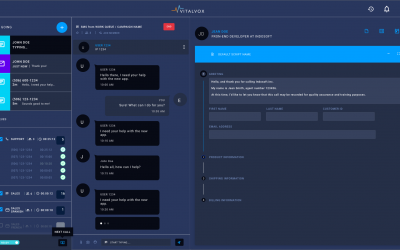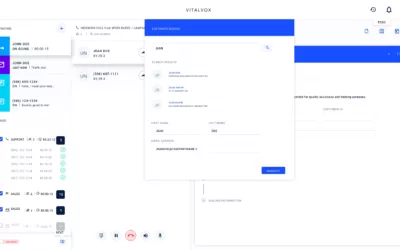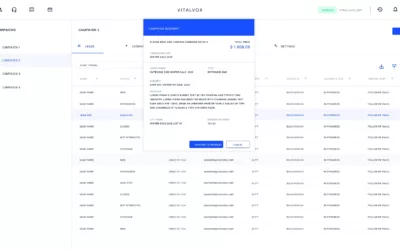In today’s fast-paced business world, Proactive Contact Center Transformation is essential. Shifting from reactive problem-solving to proactive strategies allows contact centers to enhance their operations and elevate the customer experience. Let’s explore the benefits of this proactive approach for contact centers and their customer interactions.
Understanding Reactive vs. Proactive Approaches
A reactive problem-solving strategy focuses on addressing issues only after they arise. For instance, in a contact center, agents typically respond to customer complaints or issues once the customer reaches out. While this method may resolve individual problems, it can lead to longer response times, decreased customer satisfaction, and a higher likelihood of recurring issues.
On the other hand, a proactive approach anticipates potential challenges before they escalate. Instead of waiting for problems to arise, contact centers with proactive systems analyze patterns, predict future issues, and implement preemptive solutions. This transformation allows for smoother operations and more positive customer interactions.
Benefits of Proactive Problem-Solving
1. Enhanced Customer Satisfaction
By addressing potential issues before they impact the customer, contact centers can provide a seamless service experience. For example, imagine a company sends out a notification about a known system issue before customers even notice. This proactive communication reassures customers that the company is in control and working to solve problems, which fosters trust and satisfaction.
In addition, fewer customers will need to contact support, reducing wait times for those who do. As a result, customers feel more valued and supported, ultimately boosting loyalty.
2. Reduced Operational Strain
Proactive problem-solving can also reduce the strain on contact center agents. Instead of constantly dealing with the same repetitive issues, agents can focus on more complex or unique cases. Moreover, automated systems can handle many routine problems, freeing up agents’ time for higher-level problem-solving.
This reduces burnout among employees and enhances productivity across the entire team. In the long run, this leads to lower employee turnover and improved operational efficiency.
3. Cost Savings
Another significant advantage of proactive problem-solving is the potential for cost savings. When issues are detected early, the resources needed to fix them are typically lower than when they have already caused damage. Proactive solutions minimize the need for extensive repairs or troubleshooting, which in turn reduces operational costs.
Additionally, fewer customer complaints mean fewer resources allocated to issue resolution, allowing the business to invest in areas that drive growth and innovation.
How to Shift Towards Proactive Problem-Solving
1. Leverage Advanced Analytics
Data is at the core of a proactive contact center. By using advanced analytics, centers can identify patterns in customer behavior, detect potential issues early, and implement solutions before customers are affected. For example, machine learning tools can analyze call data to detect trends that may indicate underlying problems, such as recurring technical issues or frequent customer complaints about a particular product feature.
2. Automate Customer Interactions
Automation is key to driving a proactive approach. Implementing AI-powered chatbots, for instance, can handle routine inquiries while monitoring for emerging issues. Automated systems can send preemptive notifications or tips to customers, helping them avoid problems altogether.
This technology-driven approach not only improves response time but also ensures that customers receive personalized attention without overwhelming the contact center staff.
3. Encourage Cross-Department Collaboration
A proactive approach requires input from multiple departments beyond just the contact center. Collaboration between departments such as IT, marketing, and product development ensures that everyone is on the same page regarding potential issues and their solutions. Sharing insights across the organization helps create a holistic strategy for preventing problems before they occur.
Embrace the Future of Contact Centers
Proactive Contact Center Transformation not only accelerates problem-solving but also redefines how companies engage with their customers. A proactive approach shows customers that their needs are anticipated and valued, boosting loyalty and satisfaction. Additionally, by streamlining operations and leveraging advanced technology, contact centers can operate more efficiently, reduce costs, and create a less stressful environment for employees.
Now is the time to shift to a proactive model. The future of customer service depends on it.
Contact Us
Ready to transform your contact center from reactive to proactive? Contact us today to learn how our solutions can help you anticipate problems, enhance customer satisfaction, and improve operational efficiency. Let’s work together to elevate your contact center dynamics!



